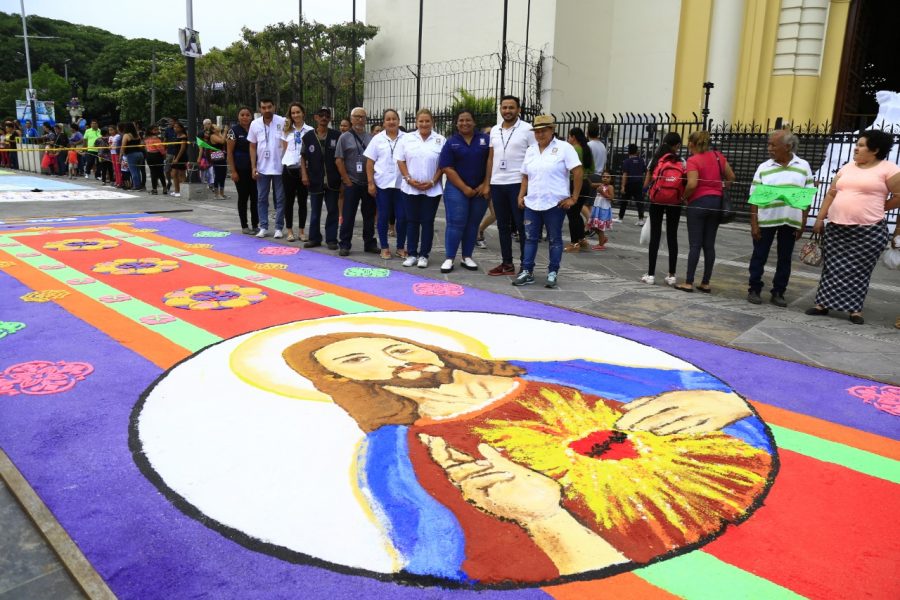Holy Week
February 12, 2020
Holy Week, also known as “Semana Santa” in Spanish, is a Roman Catholic tradition that lasts a week, and it’s held between April 5th and 11th. “Sonsonate” for example, located in El Salvador, is known for its street carpets (alfombras) made of colorful flowers and colored sawdust. Nonetheless, due to Semana Santa being the last week of lent (cuaresma) a 40-day Holy period were people pray, fast, give alms, and filled with other rituals, Salvadorans avoid consuming meat and eat seafood instead during this time they especially avoid buying on Friday’s until evening. Christians believe since Jesus sacrificed his flesh on Good Friday when he was executed, Church encourages followers to avoid meaty flesh on the anniversary of Christ’s death as a reminder of this.
Some of the popular food for the Holy Week for most people are seafood soup, rice with clams accompanied with hot tortillas made from corn flour, dry fruit candy and French toast with sugar cane honey (panela) called Torrejas, and fish coated with egg. During this time, you will also see most of the churches and the people who go there, wear purple until holy Friday where all the purple turns into black symbolizing the procession of a crucified Christ. Holy Saturday is another sad day with vigils in most churches who represents believers who believe Christ will soon be resurrected.
At the end of the week, Easter Sunday is celebrated; this is a day of celebration because Christ has resurrected. Many people are familiar with eggs that represent Easter, but what exactly do they symbolize? Eggs symbolize new life, as Jesus began his new life after his resurrection on Easter Sunday, and cracked eggs are symbolic of an empty tomb. Eating eggs was forbidden during the Holy Week. Instead, they were saved, decorated and gifted to children. It wasn’t until the 19th century that the first chocolate eggs appeared in France and Germany, and this tradition has now carried on. Holy week is a unique celebration, even if you go to El Salvador you will see different traditions within the country. El Salvador has 14 departments each department has a different Saint so depending on the Saint the rituals vary.






